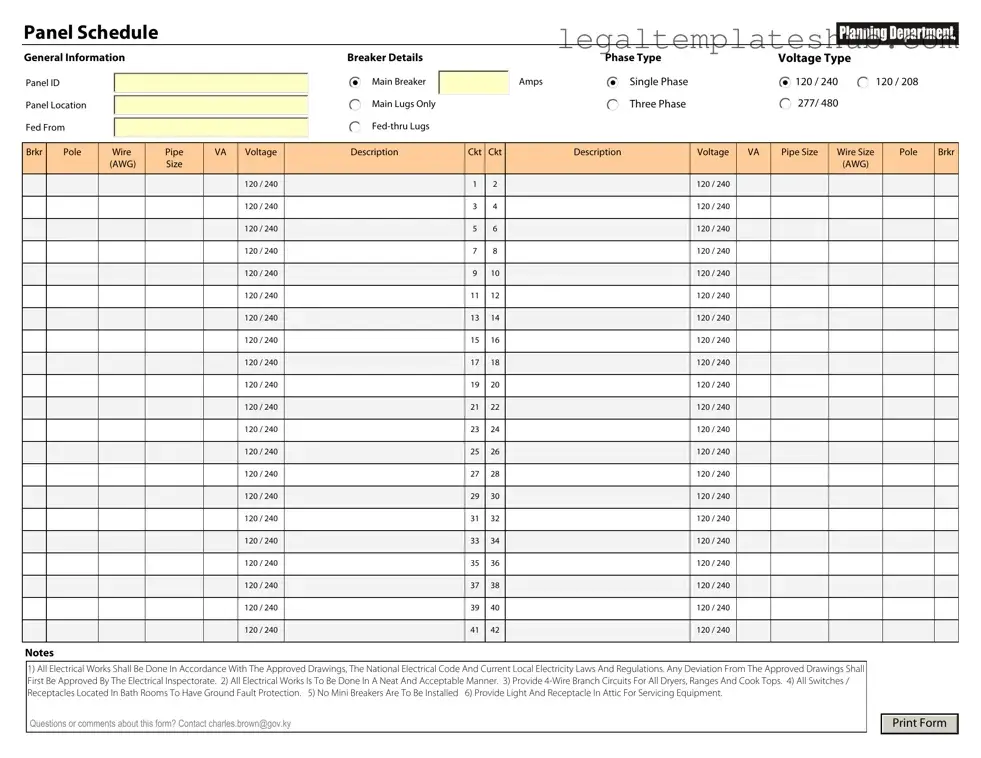Blank Electrical Panel Schedule PDF Form
The Electrical Panel Schedule form is a crucial document used to organize and detail the electrical circuits within a building. It provides essential information about the load, circuit breakers, and panel locations, ensuring safe and efficient electrical management. For accurate documentation, consider filling out the form by clicking the button below.
Access Editor
